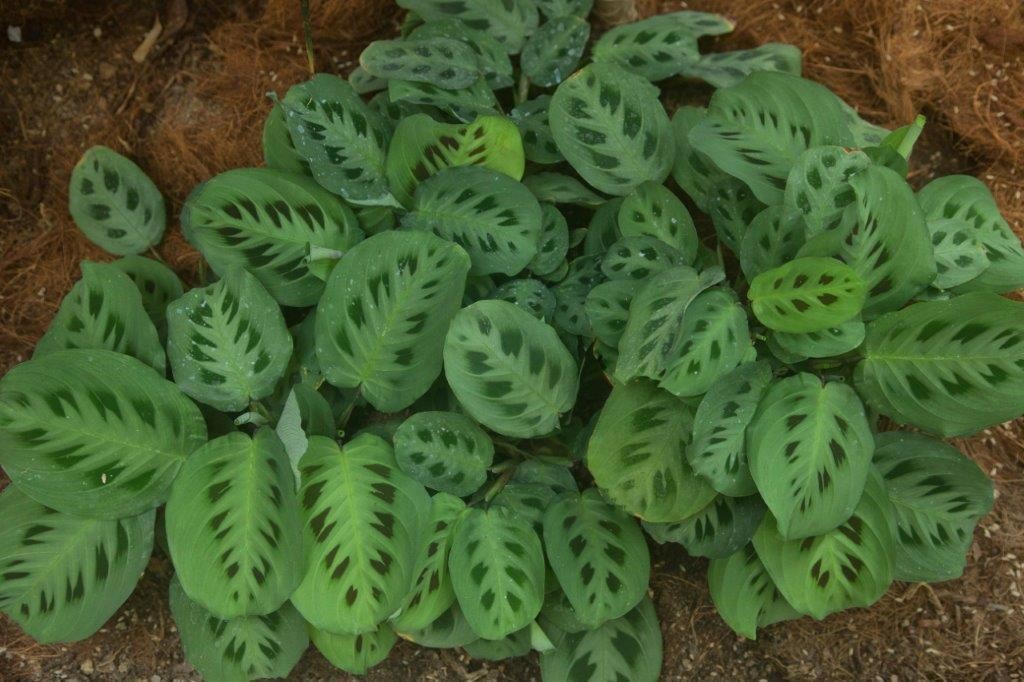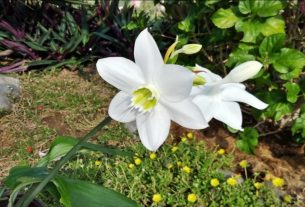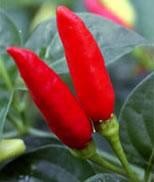By Tommy Clarkson from the June 2018 Edition
Rabbit Tracks, Maranta leuconeuru, ‘Kerchoveana’ Family: Marantaceae
Also known as: Calathea, Husband and Wife Plant, Prayer Plant, Rabbit’s Foot or Rabbit Tracks Calathea
As I’ve mentioned in other Maranta or Calathea genus writings, there is substantial confusion between the two groups. To quote Robert Lee Riffle – one of the foremost authorities on tropical botany, “[This] genus is closely allied to Calathea, and the distinction between some of the species in the two genera is often nearly impossible for the untrained.” So noted, species of both require well-draining soil, regular and ample watering, indirect (filtered) sunlight, and protection from the wind with both propagated through division of rooted offshoots, basal cuttings or seeds I prefer the first.
The Rabbit Tracks in one of twenty to forty species from the Maranta botanical “side of the house”. For it, specifically, the soil must be left consistently moist during the growing season.
In the hackneyed language of the botanist, “it is an evergreen, low-growing, rhizomatous, tropical perennial”. As a historical aside and further preparation for your participation on the nationally syndicated TV show, Jeopardy, the genus name honors Bartolommeo Maranti, Venetian botanist, circa 1559.
Apropos to that first “Also known as” name cited above, Lovell Benjamin stated, in his book, Indoor Plants, the following: “Maranta leuconeuru ‘Kerchoveana” is a remarkable plant be-cause, at sunset, its leaves lift upward and clasp together like hands in prayer, and then unfold again in the morning. For this reason, it is popularly known as the Prayer Plant.” (In researching this plant, I was quite surprised to see how many different botanical book authors and internet gardening sites called different species of those in the Marantaceae genus by the Prayer Plant name.) But several of those who I trust the most concurred with me that this is primarily called a Prayer Plant or a Rabbit Tracks.
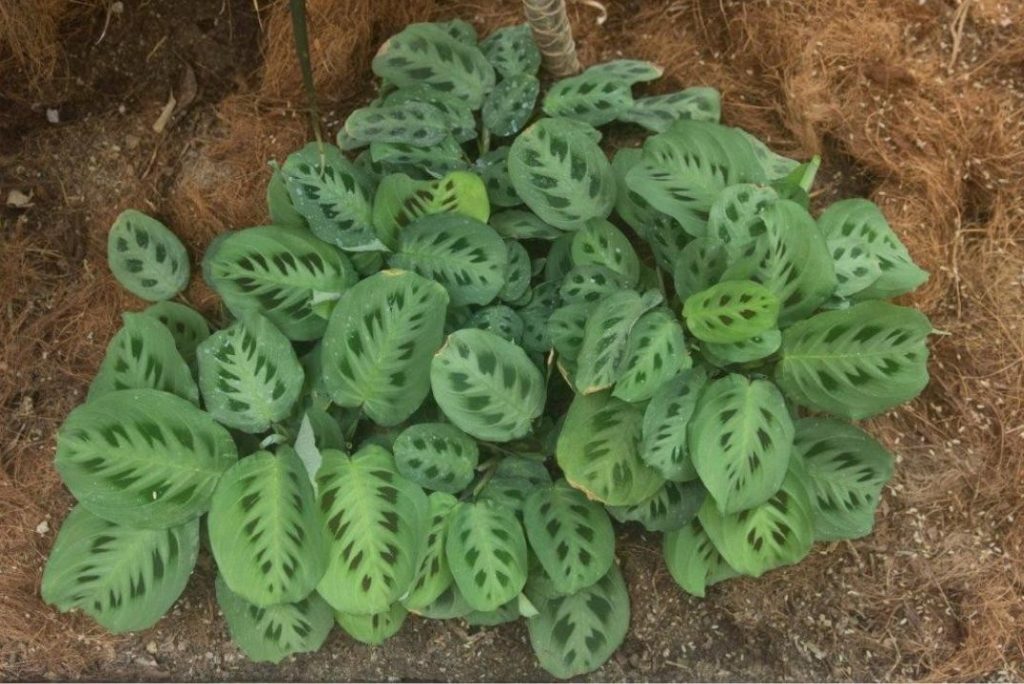
“[This] genus is closely allied to Calathea, and the distinction between some of the species in the two genera is often nearly impossible for the untrained.”
However, as a result of its – almost artistic brownish black, smudged markings on the light, olive to dark-green leaf tops (purplish-red, purplish-green or grayish-green on the underside) leaf markings, I prefer the apt name of Rabbit Tracks. With a white, central midrib, its leaf veins are fine with a silken like sheen. Yes, with this interesting clump of leaves it is rather attractive! Affirming this, Riffle has stated that “This species is possibly the most beautiful ground cover for bright but shady areas where traffic is not a factor.”
While sometimes preferring a more prostrate “lifestyle”, these good-looking, tender plants which originated in the wetter areas of tropical Brazil can grow to from six to twelve inches (15.24 – 30.48 cm) in height. With almost vine-like succulent stems that spread, their oblong leaves generally grow to around six inches (15.24 cm). Its two lipped flowers, in racemes on slender spikes just above the foliage, are seldom seen if used as an indoor plant. It has few insect or disease problems, but one should keep a watchful eye out for spider mites, mealybugs, mosaic virus and leaf spotting. Additionally, root rot can be a difficulty if your specimen is planted in poorly draining soil.
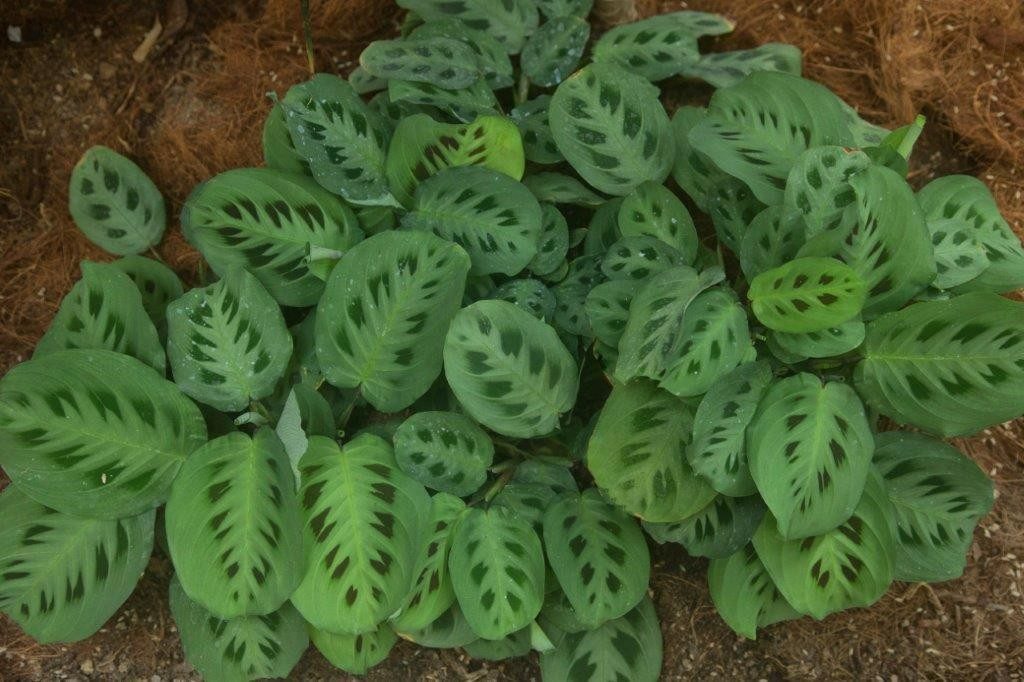
The Rabbit Tracks in one of twenty to forty species from the Maranta
botanical “side of the house”.
Forget not the importance of rich, loose, humusy soil for your plant. With this all in mind, plant and enjoy your Rabbit Tracks outdoors, where it will be a good ground cover in shady areas or, indoors, in a pot or hanging basket. (But, in this latter capacity, remember that potting soil may well lose its nutritional properties over the course of time. As a result, I recommend that you repot every two years in the spring.) Another plant venue, of which I little write, is that remaining small and enjoying a “close” atmosphere, the Rabbit Tracks is an excellent plant for a terrarium!
But let’s get back to that discussion of several species all sharing the name of Prayer Plant. They can be distinguished from one another by their leaf markings. But, to add to the confusion, there are three other close kin cultivars of Maranta leuconeuru. These are: ‘Erythroneura’ (With the common names of Herringbone Plant, Red-Nerve Plant or Red-Veined Prayer
Plant), which has olive to black-green with bright red veins and irregular light green markings around the midrib, ‘Fascinator’, appearing similar to ‘Erythroneura’ but with more pronounced midrib markings and, ‘Massangeana’ with its blackish-green leaves having silvery-gray tones along the midribs.
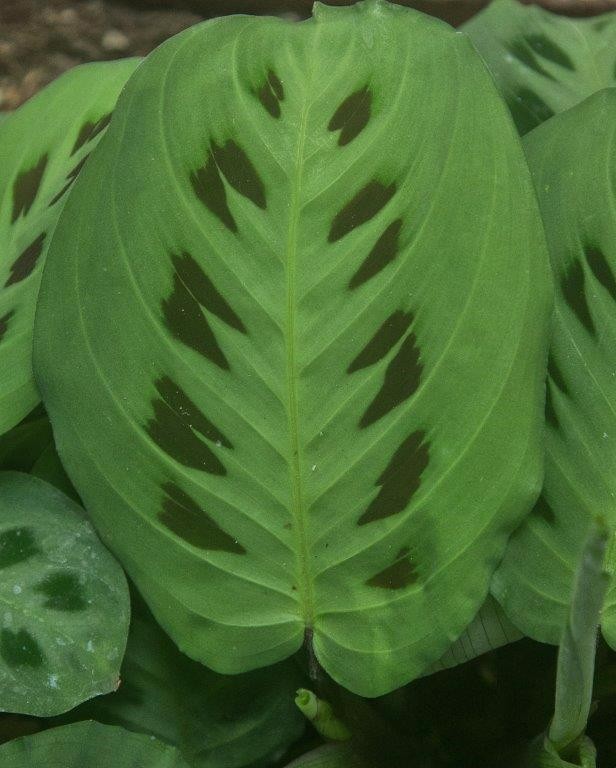
I strive to enlighten, not confuse. But sometimes I feel all that I’ve accomplished is to bring yet more into the ranks of the confused, lay gardener. But, ya’ gotta’ admit, it’s still fun!
Download the full edition or view it online
—
Tommy Clarkson is a bit of a renaissance man. He’s lived and worked in locales as disparate as the 1.2 square mile island of Kwajalein to war-torn Iraq, from aboard he and Patty’s boat berthed out of Sea Bright, NJ to Thailand, Germany, Hawaii and Viet Nam; He’s taught classes and courses on creative writing and mass communications from the elementary grades to graduate level; He’s spoken to a wide array of meetings, conferences and assemblages on topics as varied as Buddhism, strategic marketing and tropical plants; In the latter category he and Patty’s recently book, “The Civilized Jungle” – written for the lay gardener – has been heralded as “the best tropical plant book in the last ten years”; And, according to Trip Advisor, their spectacular tropical creation – Ola Brisa Gardens – is the “Number One Tour destination in Manzanillo”.
